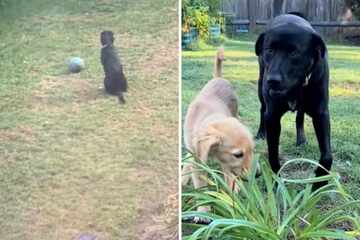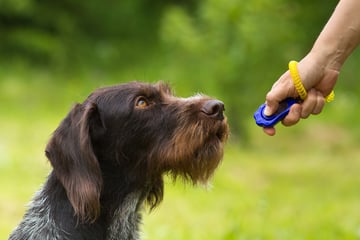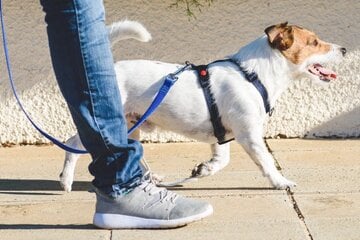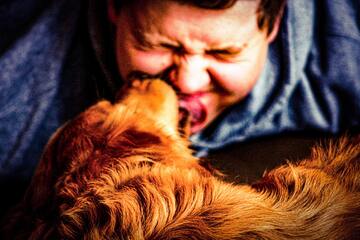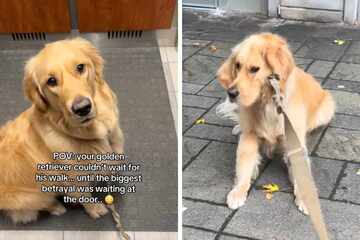What is dog agility training? How to make a DIY course
Sports are healthy and important for not only humans, but dogs too. Agility training for dogs is an incredibly effective and fun way to train your pooch, so how does it work?
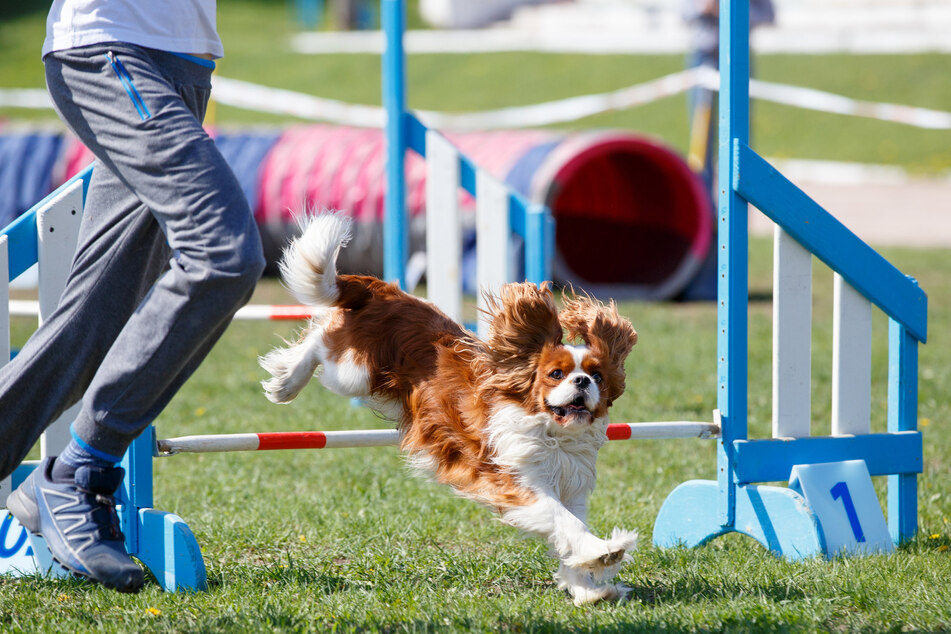
When a dog is active, it is happy, and develops a generally positive mentality towards life. This, in turn, makes pet owners more upbeat, too.
Pups love to play, which is why dog agility training is one of the best ways that you can train your doggo and help them get out some energy.
Yet, when first getting into the activity, there are lots of things to know, and even more to be careful about.
In this dog guide, we'll take you through everything that you need to know about agility training for your dog, what course equipment you need to get into the game at home, and more.
What is dog agility training?
Agility training is a dog sport in which it is led by a handler through a series of obstacles.
Indeed, it is basically a doggo obstacle course. The course usually – when practiced professionally – consists of around twenty different stations of activities, all of which must be mastered in a predetermined order and within a certain amount of time.
The handler, which could be an official dog trainer or the owner of said pooch, runs next to the dog and leads them throughout using body language, hand signals, and voice commands.
What's the one big rule? The human handler must never touch the doggo!
Why should you do a dog agility course?
A dog agility course provides a varied activity, usually out in the fresh air, that not only exercises your dog, but also helps with its mental health as well. There is an element of creativity and fun, and using teamwork to complete a mission helps to develop a harmonious relationship between man and pooch.
Through providing your dog with a great agility course, or taking them for agility training, your dog will improve its physical and mental health, its coordination, obedience, and even control and endurance.
Dog agility pros
Dog agility training can be a complicated and expensive way of getting your dog exercised and healthy, so what are the advantages?
- Agility training helps to eliminate behavioral issues due to its positive impact on a dog's mental health
- Mental stimulation is induced by more complicated dog agility training
- Training will mean that your dog will respond quickly to orders
- Your dog will be getting a great deal of physical exercise, which will keep it physically fit and healthy
- You will also get a reasonable amount of exercise, as dog agility training is physical for both the doggo and the human
Dog agility cons
Not everything is squeaky clean, though. As with most things, there are risks associated with dog agility training, as well as drawbacks that are certainly worth noting. Here are a few cons:
- There is a relatively high risk of injury when completing dog agility training, in comparison to other types of training - and both the human and the dog can be at risk
- Certain obstacles and agility tricks are riskier for particular dog breeds and sizes
Don't worry too much, though: With appropriate and moderately paced practice, training, and precautions, you can avoid most of the risks associated with dog agility training.
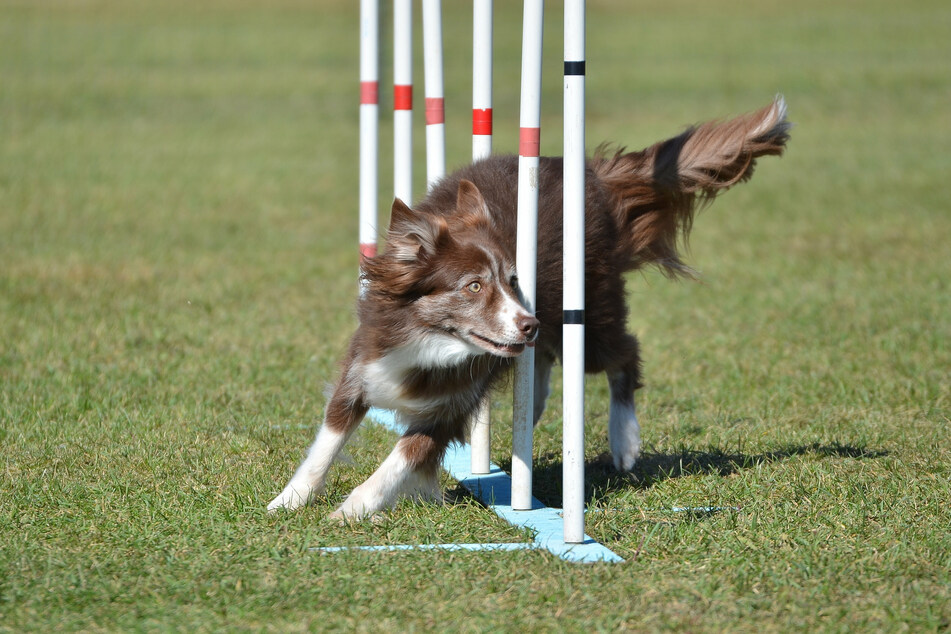
How to train your dog for agility
The best way to agility train your dog is to simply take it to an official trainer. They will be able to determine your dog's ability and develop a course that is safe, fun, and great for your faithful pooch. You don't want your dog to be stressed, you don't want your dog to get injured, so talk to a professional.
Once you have been a few times and have been given advice on what is good and what isn't good for your dog, you can feel free to set up your very own DIY dog agility course at home (described below). Remember that agility training often coincides with high speeds, sharp turns, and sudden stops - so your dog needs to be healthy to take part!
Best agility dog breeds
In principle, dog agility training can actually be suitable for most dogs. You should make sure to get permission from your vet, of course, but it is more likely than not to be fine.
Some breeds, though, are particularly eager, active, and great fits for agility training. Here are a few examples:
- Border Collie
- Australian Shepherd
- Shepherd dog
- Golden Retriever
- Scottish herding dog
- Terrier
- Cocker Spaniel
This is not an exhaustive list, and there are plenty of other dog breeds that will love and be well-suited for sports and agility training!
Are there any dog breeds that should avoid agility training?
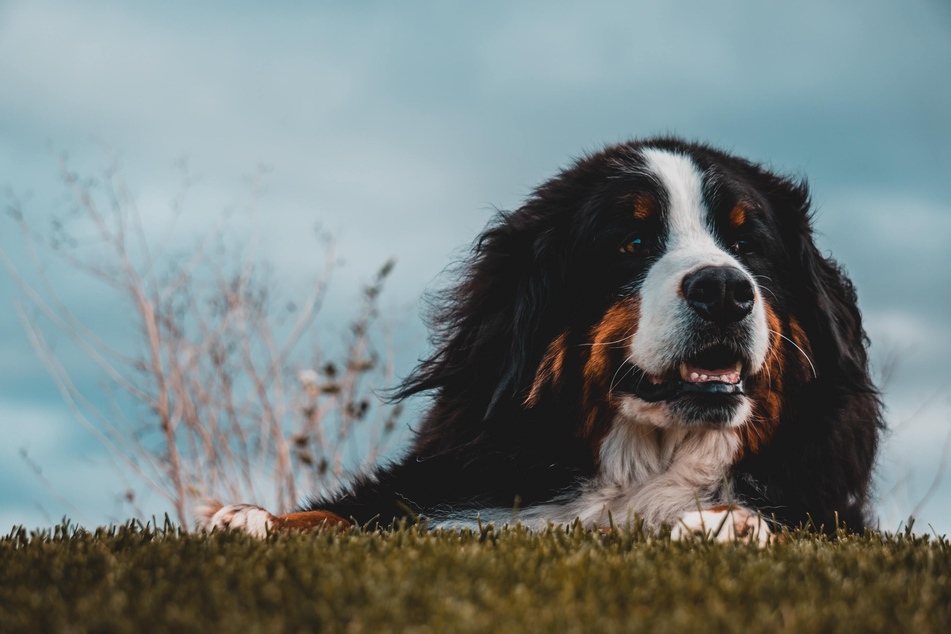
It is best for larger and heavier breeds, or those with any kind of joint problems, to avoid dog agility training. Additionally, pooches with short legs or long backs should also steer clear.
Here are some examples:
- Newfoundland
- German Boxer
- Bernese Mountain Dog
- Saint Bernard
- English Bulldog
- Dachshund
- Pug
- Bassets
Again, this list in not exhaustive, so you should always see a veterinarian before you dive into agility training.
Requirements of dog agility training
There are a number of things that you need to take seriously when considering agility training for your dog. If you make sure to be careful, it can be a fantastic activity for your animal, but if not, it could cause them a great deal of harm.
Here are a few of the most important dog agility training requirements:
- Make sure that your dog is fully grown and isn't a puppy, as you don't want to risk damage to its bone structure and skeleton. Check with your vet to find out when it is safe for your pooch to start training.
- Your dog must have a certain base-level of obedience, so that they can run freely through the course without a leash. They should be able to respond to, at minimum, basic voice commands.
- No dog who is known to have damage to their musculoskeletal system should be allowed to complete dog agility training.
- Sick and overweight dogs should never perform the sport.
- If your doggo has anxiety or other mental illnesses, they should avoid the sport. The excitement and stress could quickly overwhelm them and cause distress.
Keep in mind: Make sure that you get your doggo checked out by a veterinarian before starting agility training, as they will be able to tell you what your dog is, or isn't, capable of.
Best DIY dog agility equipment and courses
There is really no need to take your dog to proper dog agility classes if you don't have the money for it.
While it is, of course, better than doing it yourself, you don't need much equipment to build yourself a dog agility set, complete with agility equipment like tunnels and hurdles.
If you have kids, it's quite likely that you already have quite a few of these items. There's no need to buy sophisticated dog agility training equipment. Instead, try out a few straight-forward DIY methods.
A few DIY options for dog agility training:
- Make-your-own hurdles: Get a few laundry baskets and broomsticks (with the brush taken off). Place two baskets next to each other with the pole poked through the basket holes so that it is a few inches off the ground, acting as a hurdle for your doggo to jump over.
- Children's play-tents: We all had them as children, but they're also perfect for doggos! Do you remember those play-tubes that always came as part of a bigger kiddy-tent set? Well, dust it off and take it out, your dog's going to love it!
- Tire swing: Set up a tire swing relatively low to the ground and get your dog to jump through it like it's a hoop.
- Use PVC Pipes: Stick a number of PVC pipes in a row, with only enough space between them for your dog. Get your playful pooch to run zigzags through the poles.
- Get inventive: There are tons of household objects that you can use to make great obstacles for dog agility training. They include:
- Hula-hoop
- Flower pots
- Chairs
- Duct tape
- Rope
- Tables
- Blankets
- Traffic / soccer cones
Remember to set up all of your DIY dog agility training equipment in a circle, so that you can get your doggo to run laps through the course.
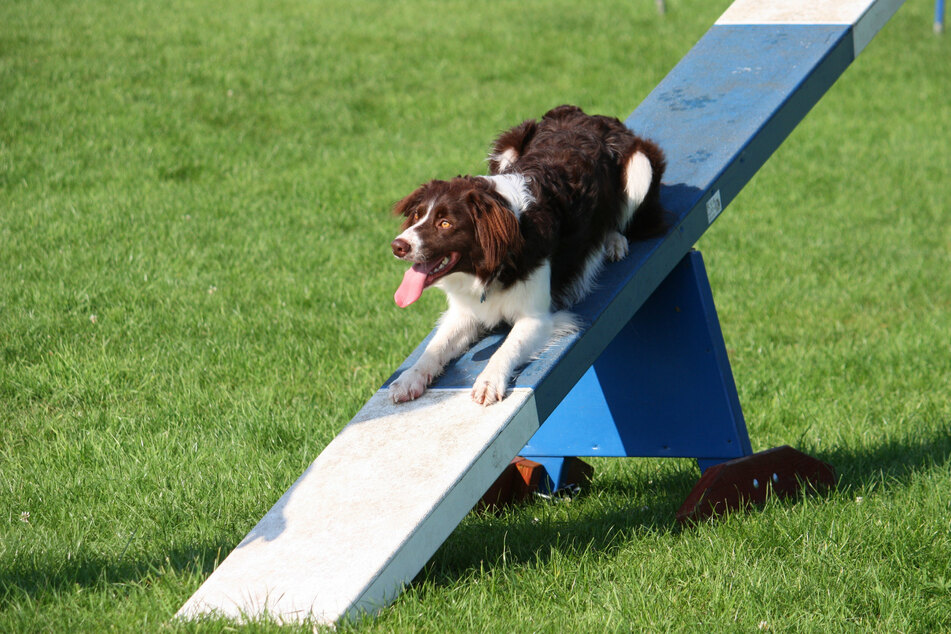
Other dog agility tips and tricks
Dog agility training is incredibly good if you are well-prepared and have organized everything perfectly. Here are a few quick tips-and-tricks for giving your dog the best experience possible:
- Sign up for agility training at a dog school or club
- Make sure that the course has been adapted to the size and abilities of your pooch
- Spend at least $20-30 per hour on training, so that you are getting the best possible course and bang for your buck
- Keep in mind that there are now dog agility world championships, and keep an eye on your dog's abilities
- Never allow a dog below the age of 18 months to compete in a tournament
- Don't be afraid to get a dog agility set for at-home practice, you can get them from many pet shops
- If you have a bigger dog, try playing search games and going swimming with them instead of doing agility training
If you are careful, get your dog checked out by a vet, and show a lot of love, your dog will have a wonderful time – and so will you.
Teaching dog agility training is fun and healthy
It's incredibly important for your dog to maintain its activity and stay moving, no matter its age or breed. While agility training doesn't suit all dogs, and there are plenty of breeds for which it's inappropriate, and it's certainly a fun and healthy way to keep your dog in good shape.
If you choose to engage in agility training with your faithful pooch, you will not only develop an even closer and more loving relationship, but they will most likely stay fit and healthy for many years to come.
Cover photo: 123rf / Skumer
